Notice
Please note that the site will close at 3pm on Tuesday 30th April for a team event. Last entry to the gardens and last orders in the restaurant will be 2.30pm.
Please note that the site will close at 3pm on Tuesday 30th April for a team event. Last entry to the gardens and last orders in the restaurant will be 2.30pm.
It was very hard work in my day, but everybody had a sense of pride in what they did. It is sad that many of those large private residences have disappeared. But it was a wonderful life, and if I had my time over again, I would do exactly the same because I was working as near to nature as I could get. (Andy Thomas, Head Gardener 1951-56, quoted in Michael Ford’s, 'His garden of treasured memories', Somerset County Gazette, c.1980)
The last Head Gardener to work at Hestercombe while it was in private ownership was Andy Thomas (1898-1991). Andy and his young wife, Elizabeth (1899-?), arrived in Taunton in 1926 and were met at the Station by Bill Bond, the estate and garden carter who promptly conveyed them by horse and cart to Richard Pearce & Sons, ironmongers, 31 Station Road where they purchased a bed. Then it was on to Hestercombe where Thomas was greeted by the then head gardener, John Kirkland who showed him around what was still a thriving Estate: ‘When I came to Hestercombe it was a first class residence. Thirty people were employed and, as a prerequisite we were given a house on the estate. There was keen competition among the gardeners to keep their own gardens perfect.’
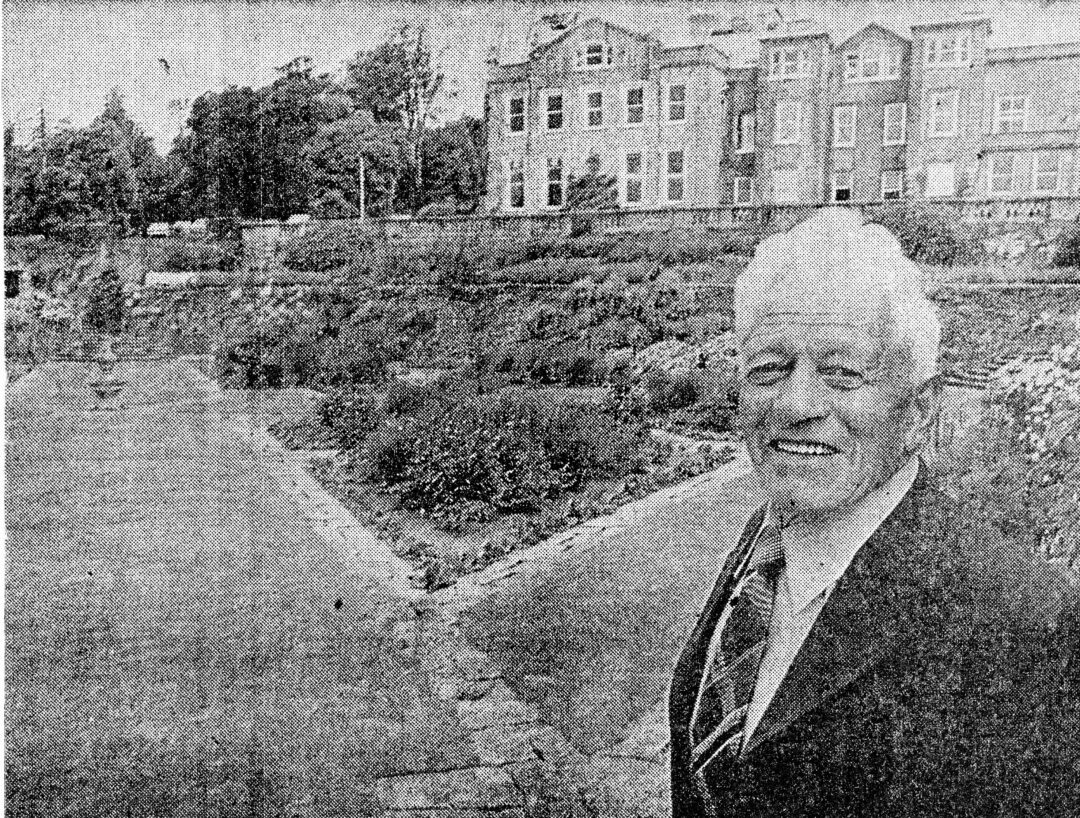
Andy Thomas was born in 1898 in the West Midlands village of Greete, Shropshire, where his father, John, worked as a gardener, probably at Stoke House near Tenbury, a red brick Tudor mansion let at the time to one William H. Foster Esq., Justice of the Peace and Chairman Burford Rural District Council. With his sister and two brothers, Andy then moved about the West Midlands intermittently, before arriving at Higher Thornwood, Tedburn St. Mary, near Exeter, around 1911. By 1924 the Thomas family were in the Reading area where 26-year-old Andy had found work as an under gardener to wine and spirit merchant, Arthur N. Gilbey (1861-1939) at Folly Farm, Sulhamstead.
The house on this 26-acre residential property had been extended twice by Edwin Lutyens in 1906 and 1912 for industrialist Zachary Merton, the surrounding gardens designed in conjunction with friend and colleague, Gertrude Jekyll, during the second makeover. The resulting scheme remains among the best-known products of their celebrated partnership, comprising a series of hedge-lined ‘rooms’, the famous sunken-pool garden, flower parterre and Dutch canal complemented by a fine rose garden and sitting alongside walled Kitchen Gardens and an Orchard. It was here that Andy Thomas met his future wife, Elizabeth, who was head housemaid to Mrs. Diana Gilbey.
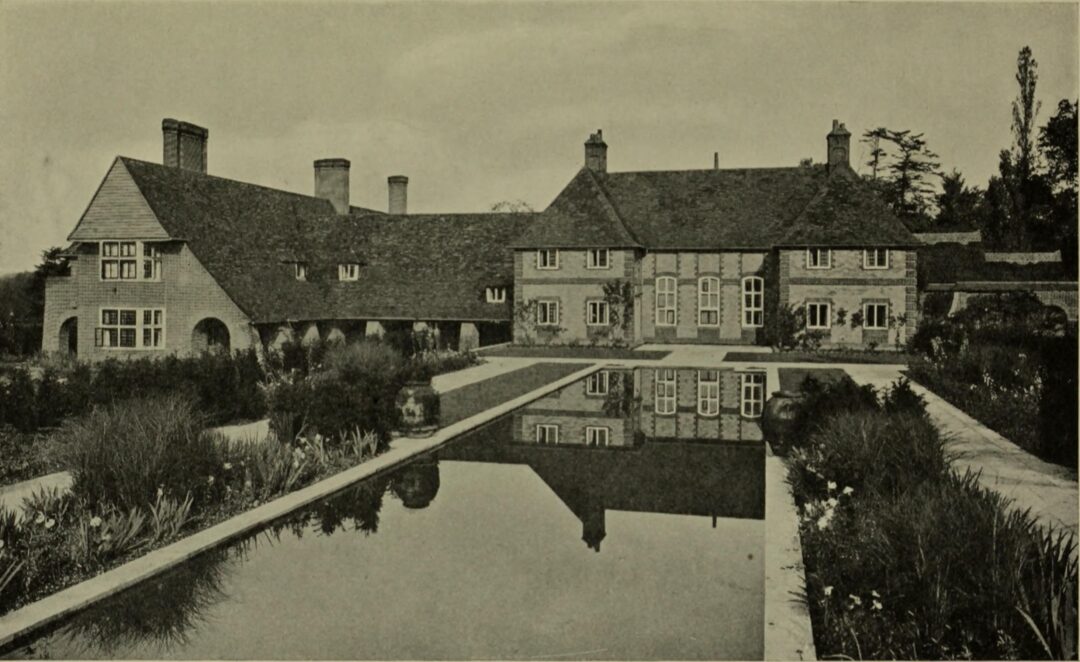
Andy Thomas’s training in the Jekyll influenced gardens at Folly Farm could not have escaped the notice of Mrs. Portman when he applied for work at Hestercombe in 1926 and in 1951 she promoted the hard working Shropshire native to Head Gardener on the retirement of John Kirkland ‘though he needed much persuasion’. Mrs. Portman died only a few months later at the age of 96 years, but Thomas stayed on after the Crown Commissioners took control of the property in September 1951, maintaining the gardens for the Fire Service until 1956 when he retired, aged 58. It was Andy Thomas who handed over a partial set of Gertrude Jekyll’s planting plans for the Formal Garden to the Somerset Fire Brigade in the early 1970s, having removed them from a potting shed on the estate for safekeeping. Originally the property of Head Gardener, Albert Hubbard, the eight tattered and soiled plans were dispatched for stabilising and repair to Mervyn Richens, Head Conservator at the Somerset Record Office, now the Somerset Heritage Centre, and then redrawn as an aide to replanting the Formal Gardens, a joint effort of the Somerset Fire Brigade, Somerset County Council and Somerset College of Agriculture and Horticulture at Cannington 1973-80. A search for the remaining planting plans eventually led overseas to the University of California at Berkeley where Miss Jekyll’s schemes for the West Rill, Orangery Borders and Great Plat were located amongst a large donation made over to the University by noted American landscape architect, Beatrix Farrand (1872-1959), beginning in 1955. Farrand’s over 2,000 Jekyll plans presentation drawings, sketches, plant lists, photographs and letters are now housed in the University of California’s Environmental Design Archive where it forms an integral part of the Reef Point Collection.
Some councillors thought Hestercombe would be a white elephant but it has proved otherwise and I think the council, fire service, horticultural advisers and gardeners have done a marvellous job, which is well worth seeing. (Andy Thomas, Head Gardener 1951-56, quoted in Michael Ford’s, 'His garden of treasured memories', Somerset County Gazette, c.1980)
Mrs. Margaret Ford, the only child of Andy Thomas, was born in 1927 at 2 Park Gate, the middle of the three terraced cottages that lie opposite the modern day entrance to Hestercombe and which were probably built for Edward Berkeley 1st Viscount Portman (1799-1888) sometime after he purchased the estate in 1872. ‘The Tuckers lived on either side of us. On one side he was disabled . . . on the other he was a gardener.’ (The 1911 census shows three people then living at Park Gate: Henry William Tucker head, aged 39, caretaker of the Reading Room; Elizabeth Tucker wife, aged 37; and William G. Tucker nephew, aged 22, domestic gardener.) ‘I was 4 or 5 when Mrs. Portman came to visit. I’ll never forget it. I looked at all her jewelry and then said: “I have a load of stuff like that . . . they are all in my rubbish [toy] box.” I really let the side down then.’ The Thomas family moved to Middle Lodge when Margaret was 17 years old (1944), and it is here that she lived until the age of 25 (1952) when she left to get married. Andy Thomas and his wife, Elizabeth, remained at Middle Lodge until 1977. In a 2009 interview Margaret recalled a happy childhood of Harvest Festivals, Xmas parties, plays and pantomimes, whist drives, ‘a lady’, and a one-eyed robin with a clubfoot.
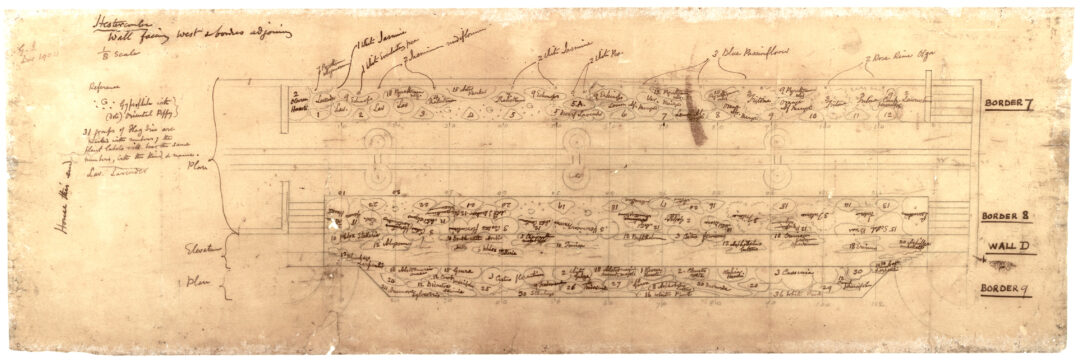
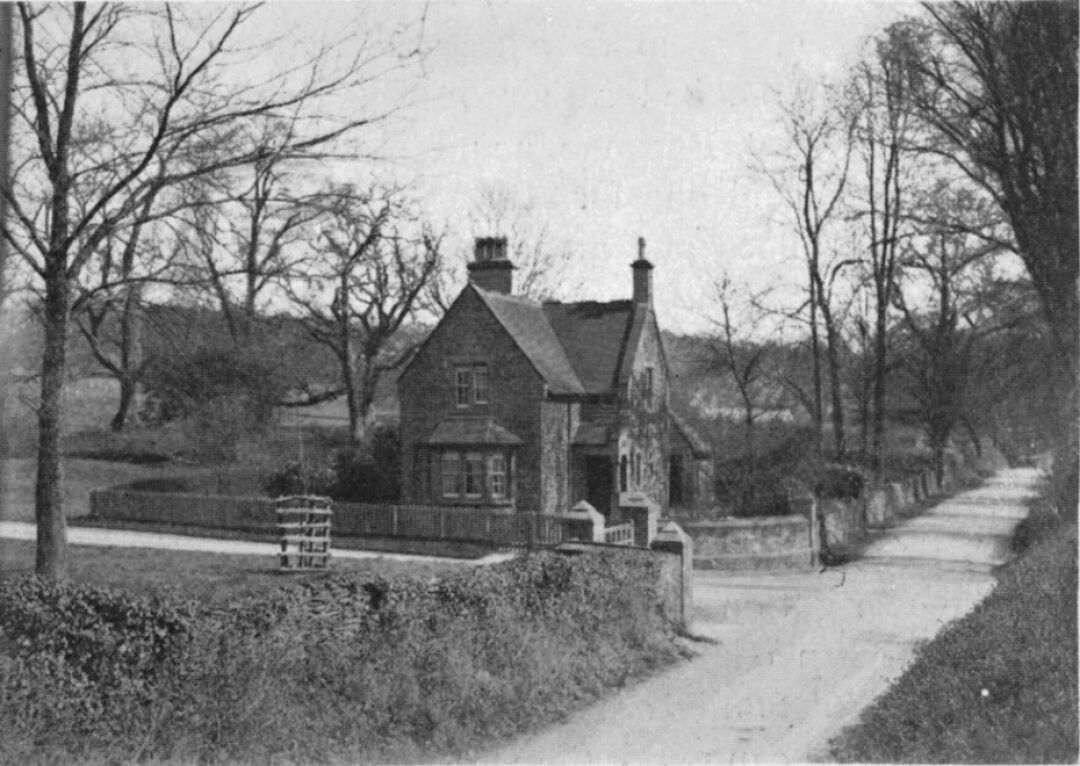
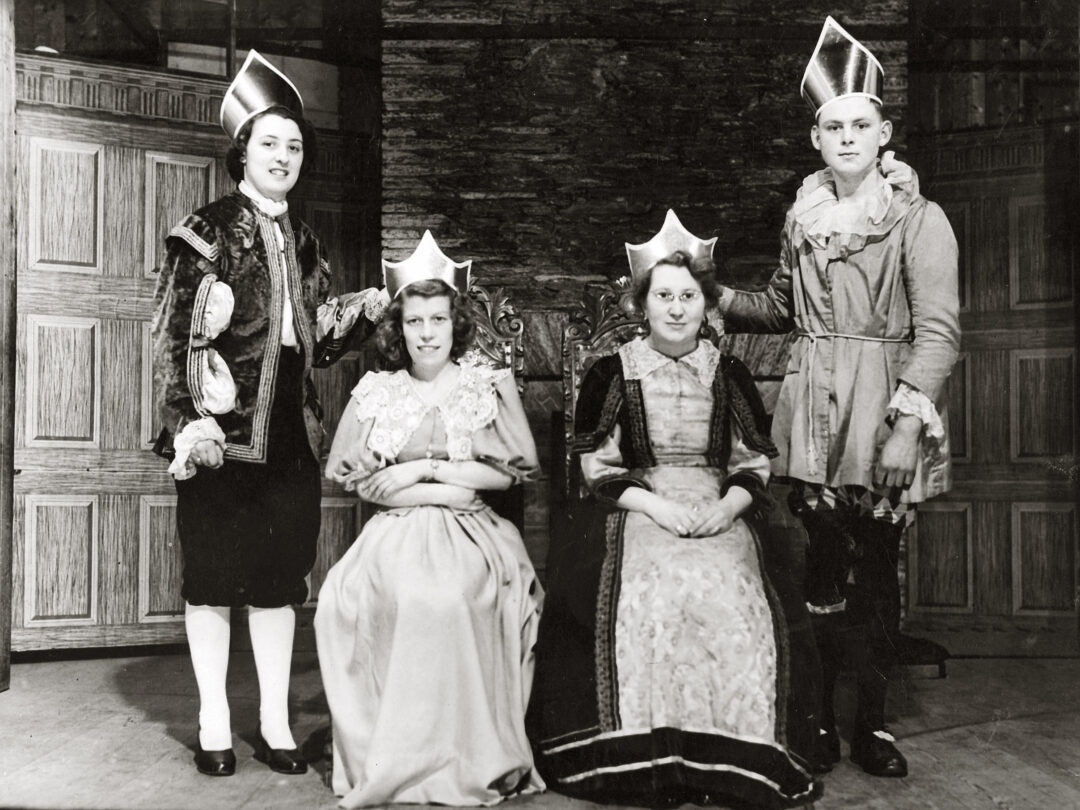
The Reading Room was the village hall for Cheddon. We did pantomimes and plays and everything. Mr Sampson, who lived in South Lodge – he didn’t work on the Estate, he just lived there -- organized a youth club for the Village. He wrote the plays and played the piano for dances. When the Americans were there during the war, the Reading Room was the NAAFI. They would meet there and have tea, coffee, and sweets. We used to wait outside and see if they would give us Mars Bars. There weren’t many Mars Bars around then.
The NAAFI (The Navy, Army and Air Force Institutes) was established in the Reading Room at Hestercombe for the benefit of the junior ranks of the British, and later, American soldiers who occupied the estate 1940-44. (The officers had their own mess in Hestercombe House as did the non-commissioned officers in the Sergeants’ Mess.) Apart from mid-morning when tea and coffee was available, the NAAFI was open from 1:00 to 2:00 PM for soldiers to write letters or relax with tea and cigarettes. Alcohol could be purchased after 6:00 PM when a hot meal was served. The sizable half-timbered building with kitchen, stage, and hall was designed by Edwin Lutyens for the recreation of E. W. B. Portman’s estate workers whose only real alternative at the time was the village pub, as at Kingston St Mary and West Monkton. The Reading Room was built between 1903 and 1913, regularly hosting an assortment of community functions well into the 1950s. From flower shows to charity garden fetes to concerts, dances and Christmas parties, they all happened in the Hestercombe Reading Room. Sidney Sampson (1902-73) youth club organiser was also the Parish Clerk and organist at Cheddon Fitzpaine church. A railway clerk by profession, he and his wife, Rosa (née Hunkin) moved into South Lodge following their marriage in July 1948 and had one child, Rosemary, born 1954. Among the pantomimes Sidney composed for the Cheddon Players was 'Sleeping Beauty', 'Jack and the Beanstalk' and ‘The Middle Watch’. Initially performed in the Reading Room, Sidney’s productions were later staged in the Cheddon Fitzpaine Memorial Hall, Sandilands, after the Reading Room was demolished in 1959.
Now, about that robin. Each day for many years, Andy Thomas rode home from work at meal times in the company of a one-eyed pet robin that flew alongside his bicycle the entire distance of one quarter of a mile. In 1982 their friendship was the subject of a touching article in the Somerset County Gazette, entitled 'His friendly robin homed on orangery'. It is repeated here in summary form.
. . . it was the custom to keep mousetraps set permanently because of the short-tailed vole, which barked the shrubs. Two traps would be placed in a boxed tunnel, sealed each end by slates to keep the birds out. Working in the gardens each day, back in the 1940s, Mr. Thomas got to know a pair of robins who nested in a crevice on the estate. One day he discovered that the hen had somehow found her way into one of the tunnels and been killed by the trap. The cock didn’t appear for several weeks, but one day turned up out of the blue – minus one eye and a set of toes. He had obviously been hit by the trap but managed to escape.
For the next six years that disabled robin became Mr. Thomas’s close companion. Every time the gardener made a squeaking sound with his lips, the robin would loom up from somewhere, perch on his hand and eat cheese, crumbs and cake. He was frightened of everyone else, including Mrs. Portman. If Mr. Thomas walked up to the greenhouses, his little red-breasted friend would come too and wait outside until the jobs had been done. Then he would follow him back again.
Despite his handicaps, the robin reared several families and was very protective. He would take food from Mr. Thomas’s hand and fly back to the rock plant crevices where the nests were built.
Every night for years Mr. Thomas shut the robin in the orangery to roost on the orange trees until let out the following morning. But one evening Mr. Thomas forgot to put him inside and they never met again.
But Andy Thomas was not the only person on the estate to have feathered friends. Mrs Portman, well known for her fondness for routine kept pet geese in the canal below the Great Plat. One of her favourite rituals occurred every morning at eight o’clock when she would call her ‘Girlies’ from her window -- ‘and they always answered her’! Punctuality was another of Mrs. Portman’s predilections. The hours of work she prescribed were 7 to 5.30 during the summer and 7 to 5 in the winter and ‘bells were rung for all the meals – at 7, 8.30, 9, 1, 2 and 5.’ She visited the dairy every day between 11 and 12, then went directly to the walled kitchen gardens where she would ring the bell for the Head Gardener.
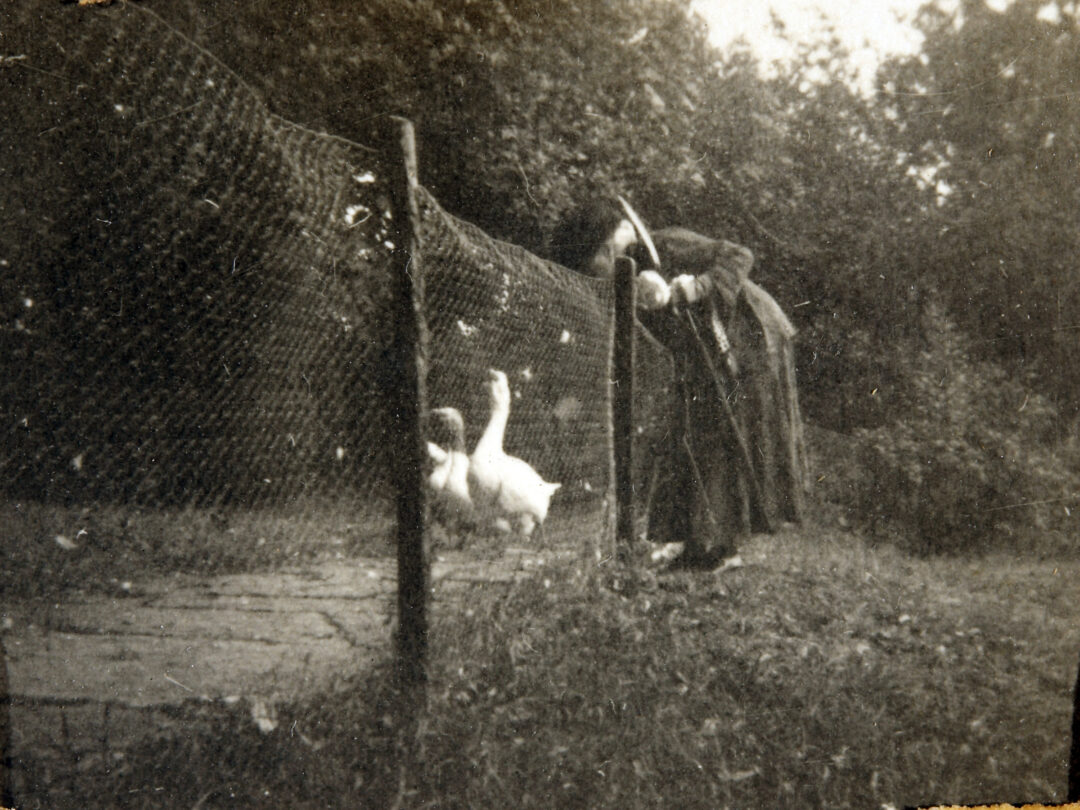
When Andy was first hired on in 1926 as a £2-a-week ‘pleasure groundsman’, he was mainly responsible for pruning and caring for the flowering shrubs. He found Mrs. Portman to be knowledgeable about ‘everything in the garden’, also very approachable. ‘She would say “Good morning, Thomas, and how are you?” And when she used to go across the lawns with her sunshade up, she would call out “Thomas! Thomas!” If I didn’t run to her she would continue to shout my name.’ The rills of Japanese irises in the Formal Garden required Andy’s frequent attention ‘so we had to make sure they were topped up with clay because artificial water always finds a way of escaping’ and every other weekend he was in charge of watering in the vast Bolton & Paul greenhouses. Then there was the 50-rung ladder and rope that were used to prune the old magnolia and creepers on the south front of the house. Andy Thomas fell off the ladder once and fractured his spine.
‘We used to keep seven or eight trees in the orangery and they were there during all my time. And we grew everything in the greenhouses – melons, grapes, peaches, carnations, stove plants, gardenias – the lot. It was sad, though, when they got rid of the orchards.’ The first mention of ground being given over to an orchard at Hestercombe is in June 1698 when Francis Warre ‘pd Roger Marsh in pt of 0-9-4 for make fursse fagots & 7 score of fagot wood in the orchard.’ By 1838, 21 acres of the then 776-acre estate was given over to fruit trees, a figure which had almost been halved by the time of Andy Thomas’ arrival in 1926 (by which time the estate had, however, been reduced by an even greater proportion of two thirds to 250 acres). By 1964 the Portman plantation below the Orangey Lawn (replanted 2012 by the Hestercombe Gardens Trust) had been allowed to virtually die out by the Crown Estates while the much larger and older Great Orchard to the east adjoining the model dairy and the Reading Room orchard by what is now the main entrance to Hestercombe had been put down to grass entirely. Among the apple trees lost from the latter, which was privately owned from 1958, was Blenheim Orange (I. 1740), a desert and cooking apple that was reportedly Mrs. Portman’s favourite.
‘We had two horses to convey vegetables to the kitchen and to do all the transportation. The horses even did the mowing of the tennis court, croquet lawn and all the drives down to South Lodge.’ The horses Andy was speaking of, ‘Snowball’ and ‘Farmer’, drew a cast iron cylinder mower at the behest of Bill Bond (1879-1969), the estate and garden carter who worked alongside Andy at Hestercombe for 26 years until his retirement in 1953. Margaret remembers the ground on either side of the drive through Sandilands as being ‘immaculate’ during her childhood – ‘you wouldn’t dare step on the grasses’. Unfortunately, Andy had to mow the terraces (Formal Garden, Victorian Terrace) himself and by hand, an all day job.
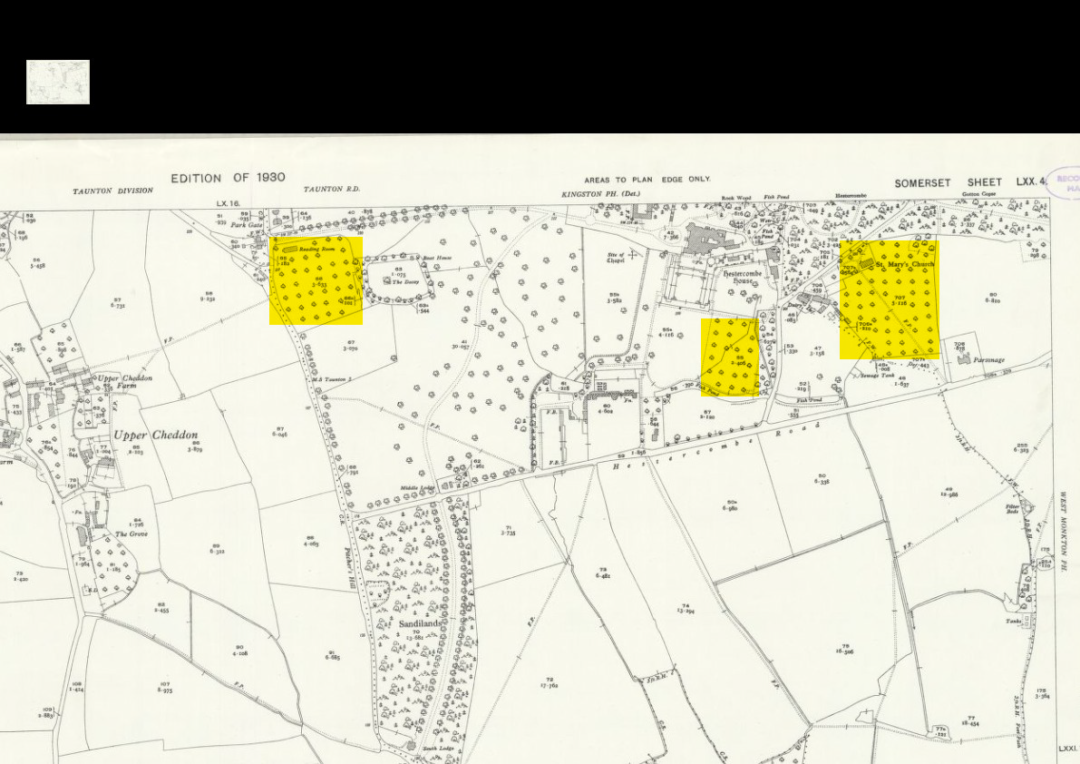
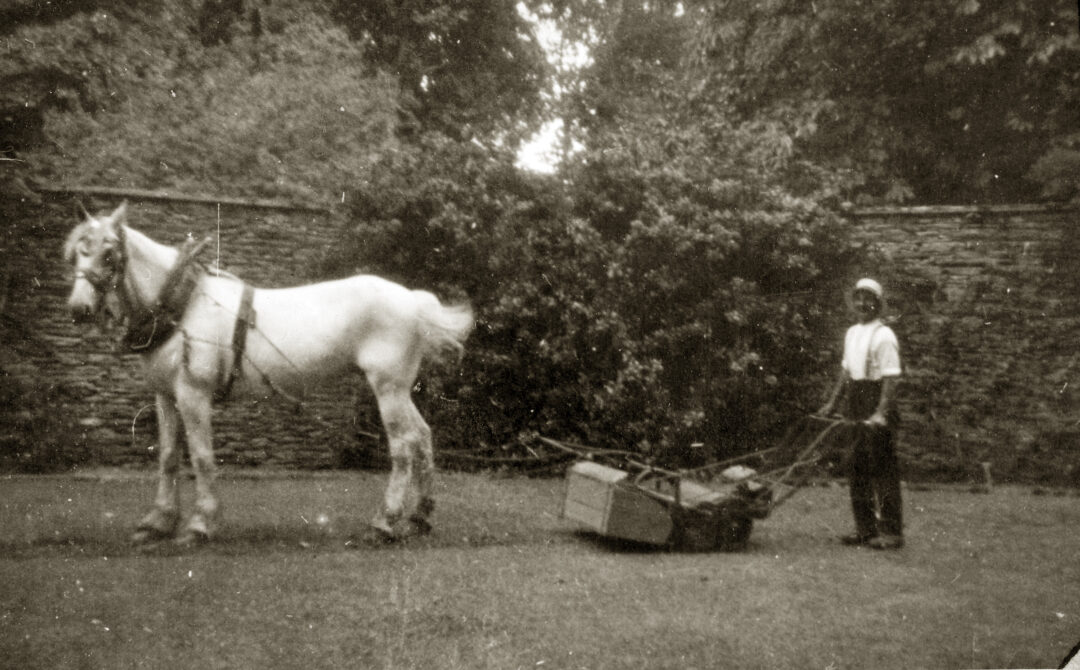
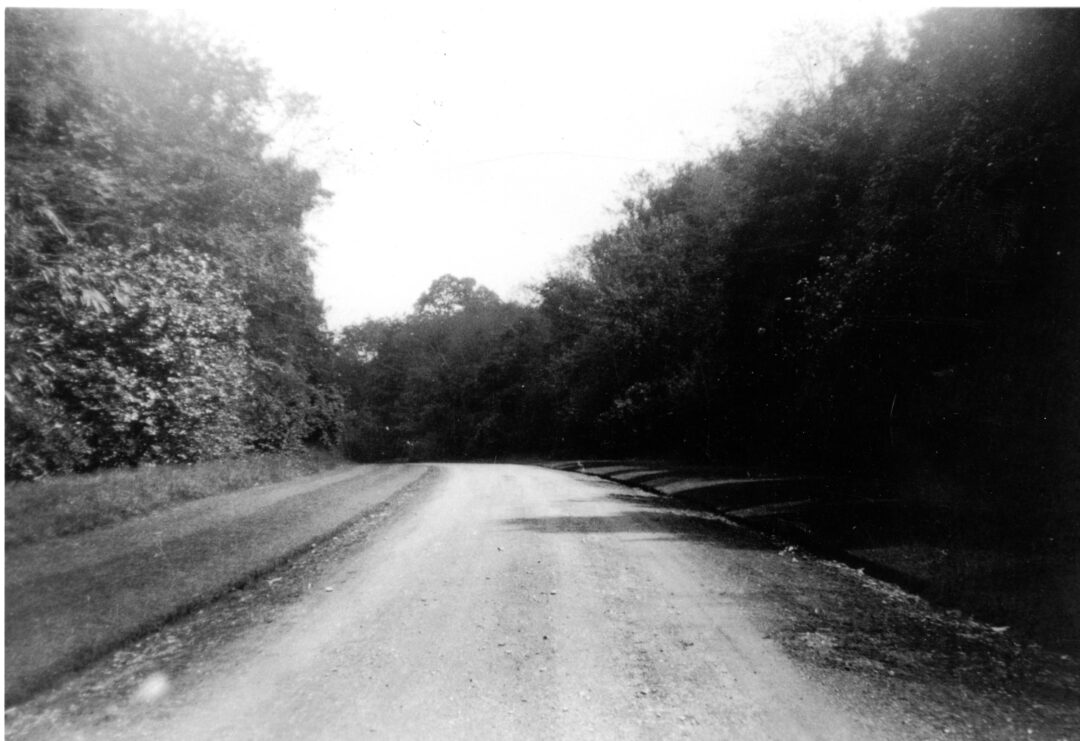
On his day off, Andy Thomas could usually be found working in his own garden at Middle Lodge. ‘They didn’t go off much . . . I think they used to have a rest on Sunday afternoon . . . they went on a lot of whist drives and belonged to a whist league’, recalled daughter Margaret. Andy had a large vegetable garden and in summer could often be found working in it until 10:00 at night. ‘We had chickens and the lot, cockerels, our own eggs, animals, a dog and cat’.
The war years were difficult ones on the estate, but Thomas and his family, coped as best they could. Margaret: ‘Dad was called up almost straight away in the War. He was part of the reserves, guarding tunnels and things like that. He was in the [Cheddon Fitzpaine] Home Guard and was at Yeovilton when it was bombed.’ Upper Cheddon Farm, which lies just over a mile northwest of Andy Thomas’s former home, Middle Lodge, served as the Home Guard Store and was used for parades along with Rowford School. Rifle practice took place at Happy Valley, just a few hundred metres away while grenade practice was undertaken in the West Monkton Quarry. Sunday morning training sessions were sometimes followed by patrols around the Parish, after which the fourteen strong militia unit was dismissed for a group social. Cheddon Fitzpaine lacked a pub, but Lance Corporal Thomas and his colleagues apparently made due by imbibing at a local farm with cider producing facilities. Willing participants included Sergeant in charge, R. W. ‘Bob’ Mead, a tenant farmer based at Volis Farm, by 1945 in the hands of the Crown Land Commissioners and Corporal Wilfrid ‘Wilf’ Perry (1918-2009), a tractor driver at Gotton Farm, now also Crown property. Perry would go on to serve as head gardener to the Somerset Fire Brigade at Hestercombe 1971-83, playing a central role in the replanting of the Formal Garden in the 1970s.
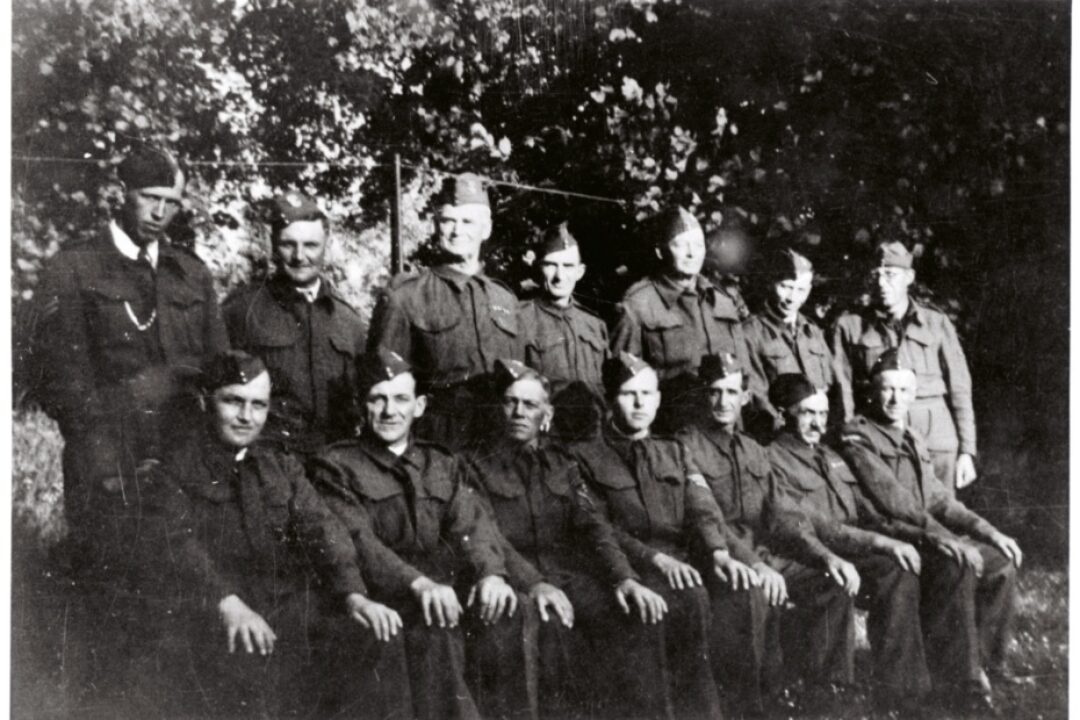
The duties of the Cheddon Fitzpaine Home Guard included the detection of enemy parachutists, the likely forerunners of an invasion force, and the manning of a 24 hour road block on Volis Hill to obstruct enemy incursions into the valley below. Corporal Hunt was known to cycle 2.5 miles to Volis Cross before sunrise, with a Zulu Club for protection and his mother-in-laws’s field glasses for surveillance. Back at Middle Lodge Andy Thomas and his wife Elizabeth were busy providing shelter for refugees. Margaret: ‘We had a house full of evacuees . . . there were two mothers, a little child and two boys.’ But when a Junkers Ju 88 German bomber crashed less than a mile away in the field opposite South Lodge (present day Cheddon School car park) just before midnight on 27 March 1944, Andy’s attentions were understandably diverted elsewhere. The first on the crash scene, he found the pilot, Lieutenant Fiedrich Kerkhoff, dead, his snagged parachute still attached to the wreckage which was scattered throughout Sandilands wood nearby. The other three crew members had bailed out successfully. On route to Bristol to attack warehouses in the Docks area, the Ju 88 aircraft had been shot down over Yeovil by an RAF Mosquito XVII of No. 209 squadron.
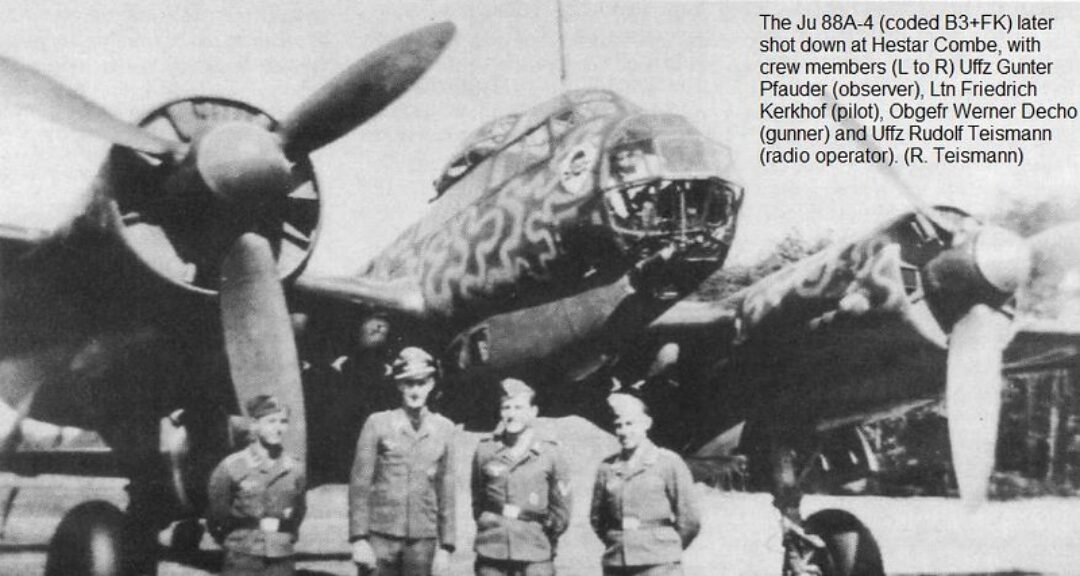
The Cheddon Home Guard stood down in March 1945, the event marked by a supper and lively smoking concert at the West Monkton Inn.
